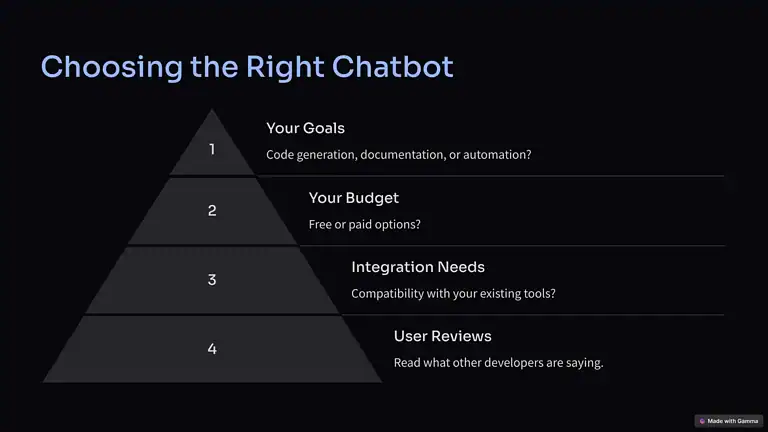GetResponse vs TinyEmail: Best for Affiliate Marketing 2025
Trying to decide between GetResponse and TinyEmail for your affiliate marketing business? You’re not alone. Both are solid email marketing software choices, but they cater to different needs.
- GetResponse is a feature-rich, all-in-one platform with advanced marketing automation.
- TinyEmail excels as a straightforward, user-friendly option, often at a lower price point.
Ultimately, the best choice depends on your budget, technical expertise, and the complexity of your email marketing strategy. Let’s dive into a detailed comparison to help you make the right decision.
Key Takeaways:
- GetResponse: Advanced automation, landing pages, webinars; ideal for scaling businesses.
- TinyEmail: Simple, affordable, user-friendly; best for beginners.
- Pricing: GetResponse (higher, scalable) vs. TinyEmail (lower, budget-friendly).
- Ease of Use: TinyEmail (easy) vs. GetResponse (complex, steep learning curve).
- Automation: GetResponse (advanced workflows) vs. TinyEmail (basic autoresponders).
- Choose: GetResponse for growth, TinyEmail for simplicity and cost.
GetResponse vs TinyEmail: Key Differences At a Glance

| Feature | GetResponse | TinyEmail |
|---|---|---|
| Ease of Use | Moderate to Complex | Very Easy |
| Automation | Advanced & Comprehensive | Basic & Limited |
| Pricing | Higher, Tiered | Lower, Simpler |
| Features | All-in-One Marketing Suite | Primarily Email Marketing |
| Landing Pages | Yes, Robust | Basic or Integrations Needed |
| Webinars | Yes, Integrated | Not Included |
| Customer Support | 24/7 Support | Email & Limited Chat |
| Ideal For | Advanced Marketers, Growing Businesses | Beginners, Budget-Conscious Users |
| Free Trial | Yes, 30 Days | Yes, 14 Days |
Understanding Your Needs: Who Are These Email Marketing Platforms For?
Before we dive into features, let’s align the software with your likely situation as an aspiring affiliate marketer.
GetResponse
If you’re aiming for a rapidly scaling business, need advanced automation, and you’re comfortable navigating a comprehensive suite of tools, GetResponse might be your best bet.
It’s excellent for creating complex email sequences, running webinars, and building dedicated landing pages—all within one platform.
For more on scaling your business, check out our guide on how to create a long-term content strategy.
TinyEmail
If you’re just starting out, need an easy-to-use email platform, and are on a tight budget, TinyEmail is more appropriate. It focuses on what’s essential for email marketing and has a very user-friendly interface. It’s less daunting for beginners.
For beginners, we recommend reading our article on how to avoid common affiliate marketing mistakes.
In-Depth Feature Analysis: GetResponse vs. TinyEmail

Let’s get into the nitty-gritty with a head-to-head feature analysis.
Core Email Marketing Features
GetResponse
- Email Templates: A huge library of pre-designed templates for various use cases.
- Drag-and-Drop Editor: Intuitive builder, easy to create custom emails.
- Segmentation: Advanced targeting options to personalize emails.
- A/B Testing: Optimize emails for the best results.
- Autoresponders: Sophisticated automation sequences with trigger-based workflows.
- Deliverability: High deliverability rates.
- List Management: Robust tools for managing subscriber lists.
- Webinars: Host webinars within the platform.
- Landing Pages: Build landing pages without code.
TinyEmail
- Email Templates: Simple, clean templates.
- Drag-and-Drop Editor: Simple and easy-to-use builder.
- Segmentation: Basic segmentation capabilities.
- A/B Testing: Basic testing available.
- Autoresponders: Automated email sequences, but less advanced than GetResponse.
- Deliverability: Good deliverability rates.
- List Management: Simple tools for managing subscriber lists.
For more on email marketing strategies, explore our guide on effective email marketing strategies.
Automation Capabilities
Quote from industry expert: “Email automation is the key to scaling any affiliate marketing business.” – Neil Patel
- GetResponse: Boasts robust, advanced automation. It goes way beyond basic autoresponders, allowing you to set up complex workflows, trigger emails based on user behavior, and even use AI to optimize campaigns.
- TinyEmail: While TinyEmail also offers automation, it’s much more basic. You can set up simple welcome sequences and automated follow-ups, but not sophisticated user-behavior-triggered emails.
For more on automation, check out our article on how AI is transforming affiliate marketing.
Ease of Use
- GetResponse: Can be overwhelming for beginners due to its extensive features. Has a slight learning curve.
- TinyEmail: Exceptionally user-friendly, with a focus on simplicity and clean design. Quick to learn and master.
Pricing Structure
- GetResponse: Tiered, becoming more expensive as your list grows and you need more features.
- TinyEmail: Pricing is more straightforward, usually starting with a low monthly fee, and is more budget-friendly, especially for smaller lists.
For more on budgeting, read our guide on how to choose the most suitable affiliate program.
Integration Capabilities
- GetResponse: A wide range of integrations from CRMs, payment gateways, analytics, and social media.
- TinyEmail: Fewer built-in integrations. Mostly focuses on connecting through APIs.
Real-World Examples: Where Each Platform Shines
GetResponse
Imagine you are launching an affiliate promotion for a new product. With GetResponse, you can set up a complete marketing funnel. You create a landing page, capture emails, set up an automated email sequence that provides value, offer incentives, and eventually direct them to the product link.
For more on landing pages, check out our guide on how to create a landing page for affiliate marketing.
TinyEmail
For a new affiliate marketer wanting to simply collect email addresses and send out weekly updates about the products they promote. TinyEmail allows them to set up a simple form on their website to build a subscriber list and email out content to that list easily.
Actionable Tips: Choosing the Right Platform for Your Needs

Before making your decision, ask yourself these key questions:
- What’s Your Budget? TinyEmail is significantly cheaper for beginners. GetResponse becomes expensive when scaling up.
- What Level of Complexity Do You Need? Are simple email broadcasts enough, or do you need robust automation and complex workflows?
- Are You Comfortable with a Learning Curve? If you want an easy, user-friendly option, TinyEmail is better.
- Do You Need Other Features Like Landing Pages and Webinars? If so, GetResponse is the better choice.
- What Integrations Do You Need? Compare integrations between the platforms and see if one is better suited for your needs.
For more tips, read our article on how to optimize your affiliate marketing website for SEO.
Making the Decision: Our Recommendation
Try GetResponse Free: If you’re looking for a comprehensive email marketing platform with advanced features and scalability, GetResponse is the more powerful tool, particularly as your business grows. Get a 30-day free trial of GetResponse (affiliate link) and experience it firsthand.
Try TinyEmail Free: If you’re seeking simplicity, ease of use, and a lower price point, TinyEmail is a great place to start. Test it out with their 14-day free trial (affiliate link) and see for yourself!
Email Marketing Tips for Success

- Build an Engaging Email List: Focus on providing value through content and lead magnets.
- Personalize Your Emails: Use segmentation to send tailored messages.
- Optimize for Mobile: Make sure emails are easily readable on all devices.
- Always A/B Test: Constantly improve your emails for better results.
- Be Consistent: Send emails regularly to keep your audience engaged.
For more on list-building, check out our guide on proven ways to grow your email list.
Email Marketing Strategically: Beyond the Software
Your email marketing software is just one piece of the puzzle. To get the best results, you need a robust strategy. This includes:
- Clear Goals: What do you want to achieve through email marketing?
- Target Audience: Who are you trying to reach, and what do they need?
- Consistent Content: Focus on delivering quality content your audience will appreciate.
- Analyze Data: Continuously evaluate performance and optimize your strategy.
For more on strategy, read our article on how to create an affiliate marketing strategy.
FAQ
What is the importance of email marketing for businesses?
Email marketing allows businesses to reach and engage with a targeted audience, offering a cost-effective marketing channel compared to other options.
What is the difference between GetResponse and TinyEmail?
GetResponse offers a comprehensive suite of marketing tools, while TinyEmail focuses on core email marketing features.
How do GetResponse and TinyEmail compare in terms of features?
Both platforms offer email templates, automation capabilities, segmentation options, integration possibilities, and reporting features. However, there are differences in the specific offerings of each platform.
What are the pricing plans for GetResponse and TinyEmail?
Both platforms have different pricing tiers, and they may offer free plans as well. The value for money offered by each platform varies.
Are GetResponse and TinyEmail user-friendly?
Both platforms cater to users with different levels of technical know-how, providing a user-friendly experience with considerations for dashboard layout, design, and ease of navigation.
How do GetResponse and TinyEmail ensure email deliverability?
Both platforms have strategies in place to avoid spam filters and ensure high deliverability rates, ensuring that emails land in subscribers’ inboxes.
What customer support options are available for GetResponse and TinyEmail?
Both platforms offer customer support through email, chat, and phone channels. Timely and helpful support is essential for businesses using email marketing tools.
Can GetResponse and TinyEmail integrate with other tools?
Both platforms support integration with popular CRM systems and e-commerce platforms, allowing for seamless integration with other tools for efficient workflow management.
Conclusion

Choosing between GetResponse and TinyEmail depends entirely on your specific needs and your current place in your affiliate marketing journey. GetResponse offers a robust all-in-one platform ideal for scaling a business. TinyEmail offers a simpler, more budget-friendly approach. Both have their place, so consider carefully the factors outlined in this article.
Remember that even the best email marketing software won’t deliver if your overall strategy isn’t solid. Take action, try the free trials, and start building your email marketing empire today!
Start Your Free Trial Now:
Don’t wait any longer, start your free trials now and start leveraging the power of email marketing!
🚀 Supercharge Your Marketing

GetResponse: Your All-in-One Marketing Platform
Unlock the power of email marketing, landing pages, and automation to skyrocket your business growth! 📈
- Intuitive email campaign creator
- High-converting landing page templates
- Advanced marketing automation
- Powerful analytics and reporting
Source Links
- https://indishmarketer.com/tinyemail-vs-getresponse-which-tool-is-better-for-you/
- https://thesoftreview.com/getresponse-vs-tinyemail/
- https://zoraxsoftware.com/getresponse-vs-tinyemail-which-is-the-better-option/
I’m Alexios Papaioannou, an experienced affiliate marketer and content creator. With a decade of expertise, I excel in crafting engaging blog posts to boost your brand. My love for running fuels my creativity. Let’s create exceptional content together!






